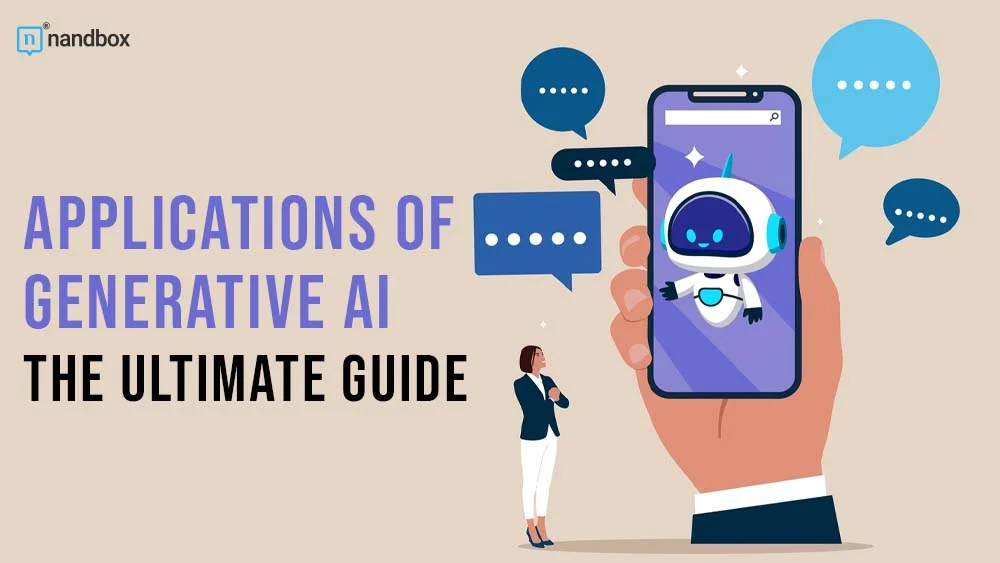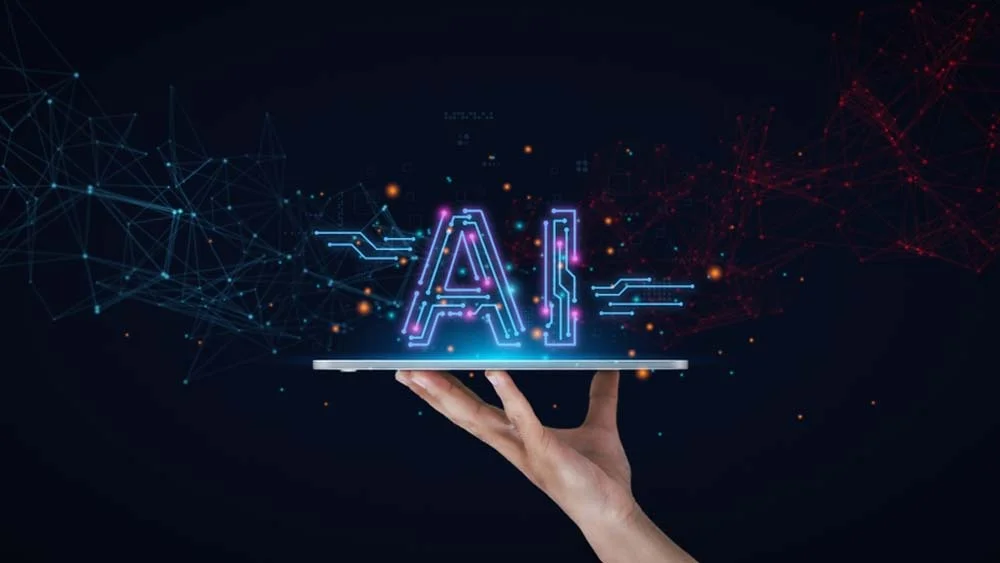Artificial intelligence that uses generative techniques can create a variety of content, such as text, images, audio, and synthetic data. The ease of use of fresh interfaces for quickly producing high-quality text, pictures, and movies has fueled recent interest in generative AI. That is why, in this guide, we’re about to discuss the applications of generative AI and how to use them.
We should mention that the technology is not entirely new. Chatbots first started using generative AI in the 1960s. However, generative AI could not produce convincingly authentic photos, videos, or sounds of actual people. That is, until the invention of generative adversarial networks, or GANs, in 2014. GANs are a sort of machine learning algorithm. As it progresses, generative AI nowadays can play the role of AI solutions in app development. That is why, in this guide, we’ll talk about the different content that generative AI can help you produce and whether or not it can be a software development assistant or not.
Generative AI: A Quick Overview
The application of generative artificial intelligence gives users the ability to rapidly generate new material based on a range of different inputs. Text, pictures, audio, animation, three-dimensional models, and various other kinds of data can all function as inputs and outputs for these models.
Artificial intelligence models that generate fresh and original content use neural networks to analyze previously collected data in order to recognize patterns and structures therein.
One of the most important things that this type of AI has made possible is the ability to train generative AI models using different ways of learning, like unsupervised or semi-supervised learning. These methods are often covered in a generative AI course to help learners master the technology. Because of this, businesses now have the capacity to harness an enormous quantity of unlabeled information to build foundation models in a manner that is both simpler and more expedient. Foundation models are able to serve as the foundation for artificial intelligence (AI) systems that are capable of performing a variety of functions, as their name suggests.
Foundation models can take many forms; such examples are GPT-3 and Stable Diffusion, both of which enable users to make use of the power that language provides. Users are able to generate a piece of writing based on a brief written request by using well-known apps such as ChatGPT, which pulls on GPT-3. Stable Diffusion, on the other hand, enables users to build photorealistic AI generated visuals based on a text input.
Ways to Evaluate generative AI Models
There are several factors and requirements that you could use to determine if one AI model can be successful or not. Here are these requirements or what we managed to gather for you:
- Quality: You cannot overstate the importance of possessing high-quality generation outputs. This is especially true for apps that engage directly with consumers. For instance, when it comes to speech creation, having poor speech quality makes it challenging to understand. In a similar vein, when it comes to image production, the outputs that you intend to include should be distinct in appearance from natural photographs.
- Diversity: As long as the model is strong, it should be able to handle the minority modes that show up in its data distribution without lowering the quality of its generation. This assists in reducing unwanted biases that are present in the trained models.
- Speed: You require rapid generation for many interactive apps to be useful in content creation workflows. One example of this is the ability to modify images in real time.
How Do You Create Generative AI Models?
Combining the advantageous traits of each type of generative model can result in models that are even more powerful. Let us breakdown the traits or requirements that will help narrow things down for you.
Diffusion Models
Diffusion models are simply generative models that generate vectors. That is during the training phase. It all happens in latent space using a two-step method. We often refer to these models as eliminating diffusion probabilistic models, or DDPMs. Additionally, we call the first process forward diffusion, while referring to the second step as reverse diffusion.
The initial diffusion process slowly adds randomness to the training data. The reverse diffusion process, on the other hand, removes the noise that the forward process added to the data samples. Running the opposite denoising procedure, which begins with noise that is completely arbitrary, can result in the generation of new data.
Because this is done in two steps, hundreds or even an infinite number of layers can be trained. This means that diffusion models usually give the best results when making generative AI models. The training of a diffusion model can take longer than the training of a VAE, or variational model.
Diffusion models are also foundation models because they are used on a large scale, produce high-quality results, are flexible, and are thought to work best for general use cases. Running foundation models, on the other hand, is a tedious and time-consuming operation because of the process of reverse sampling.
Variational Autoencoders (VAEs) Models
Encoders and decoders are the two neural networks that make up a VAE. The common names for these networks are as follows: An encoder takes an input and transforms it into an encoded form of the data that is both smaller and more dense when it is output. This representation that you compress maintains the information that is required for a decoder.
That is, to be able to reconstruct the original data that was entered while excluding any information that is not important to this task. Both the encoder and the decoder collaborate in order to acquire knowledge of an effective and straightforward latent data representation.
This makes it easy for the user to pick out new latent representations, which can then be mapped through the decoder to make new data. Although VAEs are capable of producing outputs like photographs more quickly than diffusion models, the images they produce are less detailed.
Applications of Generative AI: Generative adversarial networks (GANs) Models
Before diffusion models became so popular, generative adversarial networks (GANs), which were discovered in 2014, were thought to be the most popular of the three. GANs pit a pair of neural networks against each other.
A generator that produces new instances and a discriminator that learns to differentiate the created content from being true (from the domain) or false (generated) A generator that produces new cases and a discriminator that knows how to differentiate between the generated content as either genuine (from the domain) or false (generated)
A Model Summary: From Me to You
The generator grows better at producing content, and the discriminator gets better at recognizing generated content as it gets trained together. As a result, both models get more intelligent. This process is repetitive, and after each iteration, They challenge both elements to keep getting better. This continues until the newly generated material is indistinguishable from the content that already exists.
It is better to use GANs for developing domain-specific data because, even though they can quickly produce outputs and deliver high-quality samples, the samples they produce are not very diverse.
The underlying architecture is also an important consideration in the process of developing generative models. You can use the transformer network, which is one of the most common. In the context of generative artificial intelligence, having a solid understanding of how it operates is essential.
What Advantages Does Generative Artificial Intelligence Offer?
There are many reasons why generative artificial intelligence is so crucial. The following are some of the primary advantages that generative AI offers:
- It is possible to use generative AI algorithms to produce brand-new, original content like videos, text, and images that is indistinguishable from the data people produce. People can develop this type of content in the form of AI image, videos, and text. This has potential uses in a variety of fields, including the creative arts, advertising, and entertainment.
- Using generative AI algorithms can make traditional AI systems faster and more accurate. You can use these systems for things like computer vision and processing natural languages. For instance, you can use creative AI algorithms to generate synthetic data. You can then employ this knowledge in the education and evaluation of other types of AI systems.
- Generative AI algorithms are often used for investigating and analyzing complex data in novel ways. This allows organizations and researchers to identify concealed trends and patterns that may not be obvious from the raw data alone. This can be a very useful tool.
- Generative artificial intelligence algorithms can assist in automating and accelerating a range of processes and operations, which can save businesses and organizations both time and resources. For example, AI writing assistants can help content creators generate high-quality articles, blog posts, and other written materials more efficiently, allowing them to focus on other essential aspects of their work.
Final Thoughts on Our Applications of Generative AI Guide!
The field of artificial intelligence research and development, known as generative AI, is crucial because it has the potential to have substantial influence across a wide variety of domains and applications. That is why we strongly recommend you get to know it and use it effectively in your business. Another major factor that could help you implement generative AI effectively in your business and help it prosper, other than generative AI consulting services, is application development. That is what we offer you here at nandbox.
You can use our native no-code app builder in order to create a seamless app that will help empower your business. Additionally, apps can help improve communication all over the world for your clients, and with AI, you can eliminate the word “limitations.” Sign up now and take your business to the next level with nandbox’s native no-code app builder.






